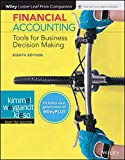
Concept explainers
(a)
Financial statements: Financial statements are condensed summary of transactions communicated in the form of reports for the purpose of decision making.
Income statement: The financial statement which reports revenues and expenses from business operations and the result of those operations as net income or net loss for a particular time period is referred to as income statement.
To prepare: (a) Income statement and retained earnings statement for Corporation F.
(a)
Explanation of Solution
Prepare income statement for Corporation F for the year ended July 31, 2017.
| Corporation F | ||
| Income Statement | ||
| For the Year Ended July 31, 2017 | ||
| Revenues | ||
| Service revenue | $6,100 | |
| Rent revenue | 8,500 | |
| Total revenue | $74,600 | |
| Expenses | ||
| Salaries and wages expense | $57,500 | |
| Supplies expense | 15,600 | |
|
| 4,000 | |
| Total expenses | 77,100 | |
| Net loss | $(2,500) | |
Table (1)
Prepare retained earnings statement for Corporation F for the year ended July 31, 2017.
| Corporation F | |
| Retained Earnings Statement | |
| For the Year Ended July 31, 2017 | |
| Retained earnings, August 1, 2017 | $34,000 |
| Less: Net loss | 2,500 |
| 31,500 | |
| Less: Dividends | 4,000 |
| Retained earnings, July 31, 2017 | $27,500 |
Table (2)
Note: Refer to Table (1) for net income value.
(b)
To prepare: (a) Income statement and retained earnings statement for Corporation F.
(b)
Explanation of Solution
Prepare classified balance sheet for Corporation F as at July 31, 2017.
| Corporation F | ||
| Balance Sheet | ||
| July 31, 2017 | ||
| Assets | ||
| Current assets | ||
| Cash | $29,200 | |
|
| 9,780 | |
| Total current assets | $38,980 | |
| Property, plant, and equipment | ||
| Equipment | 18,500 | |
|
Less: | 6,000 | 12,500 |
| Total assets | $51,480 | |
| Liabilities and Stockholders’ Equity | ||
| Current liabilities | ||
| Accounts payable | $4,100 | |
| Salaries and wages payable | 2,080 | |
| Total current liabilities | $6,080 | |
| Long-term liabilities | ||
| Notes payable | 1,800 | |
| Total liabilities | 7,980 | |
| Stockholders’ equity | ||
| Common stock | 16,000 | |
| Retained earnings | 27,500 | |
| Total stockholders’ equity | 43,500 | |
| Total liabilities and stockholders’ equity | $51,480 | |
Table (3)
Note: Refer to Table (2) for retained earnings value.
(c)
Formula of current ratio:
Debt to assets ratio: This financial ratio evaluates the ability of a company to pay off long-term debt obligations owed to creditors. This ratio assesses the solvency of a company.
Formula of debt to assets ratio:
To prepare: (a (c) Determine current ratio and debt to assets ratio.
(c)
Explanation of Solution
Compute current ratio for Corporation F, if current assets are $38,980 and current liabilities are $6,180.
Note: Refer to Table (3) for current assets and current liabilities values.
Compute debt to assets ratio for Corporation F, if total assets are $51,480 and total liabilities are $7,980.
Note: Refer to Table (3) for total assets and total liabilities values.
(d)
To prepare: (d) Analyze the current ratio and debt to assets ratio, and decide whether to sell the equipment to Corporation F
(d)
Explanation of Solution
Change in current ratio and debt to assets ratio: Equipment is a fixed asset, not a current asset. 5-year note payable is a long-term liability. So, these two items will have no effect on current ratio. But the referred loan (note payable) would affect Corporation F’s debt to asset ratio. If total assets and total liabilities increase, the debt to assets ratio will also increase from 15.5% to 39.1% as shown below:
Decision to make sale: The sales manager of L Equipment would prefer to make sale of equipment based on the computed current ratio of 6.3:1 and debt to assets ratio of 15.5%. These ratios indicate that the company has good ability to pay off short-term and long-term obligations. But the sales manager would also estimate the interest paying capacity of L Equipment in the future. Moreover, this year Corporation F is in losses. The sales manager could better lower his note payable amount by considering a down payment initially.
Want to see more full solutions like this?
Chapter 2 Solutions
Financial Accounting: Tools for Business Decision Making, 8e WileyPLUS (next generation) + Loose-leaf
- no chatgpAccumulated Depreciation will appear as a deduction within the section of the balance sheet labeled as Property, Plant and Equipment. True Falsearrow_forwardNo ai Depreciation Expense is shown on the income statement in order to achieve accounting's matching principle. True Falsearrow_forwardno aiOne company might depreciate a new computer over three years while another company might depreciate the same model computer over five years...and both companies are right. True Falsearrow_forward
- no ai An asset's useful life is the same as its physical life? True Falsearrow_forwardno ai Depreciation Expense reflects an allocation of an asset's original cost rather than an allocation based on the economic value that is being consumed. True Falsearrow_forwardThe purpose of depreciation is to have the balance sheet report the current value of an asset. True Falsearrow_forward
 Managerial Accounting: The Cornerstone of Busines...AccountingISBN:9781337115773Author:Maryanne M. Mowen, Don R. Hansen, Dan L. HeitgerPublisher:Cengage Learning
Managerial Accounting: The Cornerstone of Busines...AccountingISBN:9781337115773Author:Maryanne M. Mowen, Don R. Hansen, Dan L. HeitgerPublisher:Cengage Learning Intermediate Accounting: Reporting And AnalysisAccountingISBN:9781337788281Author:James M. Wahlen, Jefferson P. Jones, Donald PagachPublisher:Cengage Learning
Intermediate Accounting: Reporting And AnalysisAccountingISBN:9781337788281Author:James M. Wahlen, Jefferson P. Jones, Donald PagachPublisher:Cengage Learning Cornerstones of Financial AccountingAccountingISBN:9781337690881Author:Jay Rich, Jeff JonesPublisher:Cengage Learning
Cornerstones of Financial AccountingAccountingISBN:9781337690881Author:Jay Rich, Jeff JonesPublisher:Cengage Learning


